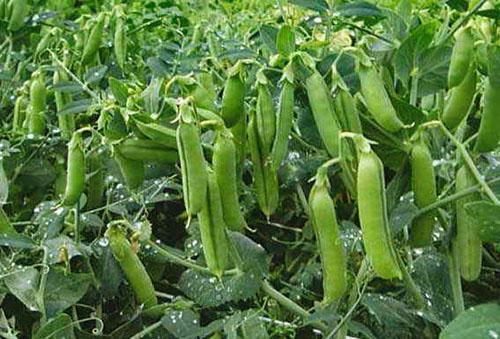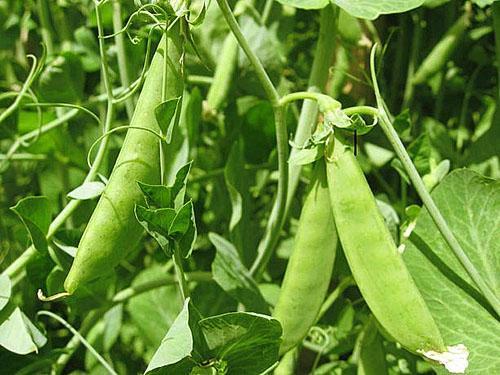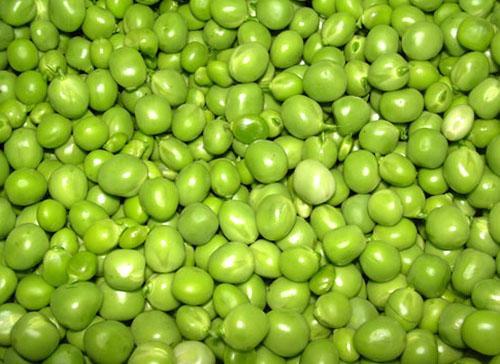Growing peas in the open field
 Everyone's favorite vegetable culture, peas, belongs to legumes. Peas are grown for their beneficial properties. The culture contains vegetable protein that is easily digestible. It contains 23 types of various minerals and trace elements and has antiseptic and anthelmintic properties in the green bean stage. Outdoor cultivation of peas is available in all farming zones.
Everyone's favorite vegetable culture, peas, belongs to legumes. Peas are grown for their beneficial properties. The culture contains vegetable protein that is easily digestible. It contains 23 types of various minerals and trace elements and has antiseptic and anthelmintic properties in the green bean stage. Outdoor cultivation of peas is available in all farming zones.
Pea growing requirements

 Pea varieties are classified according to the purpose of production. So, there are varieties intended for the production of dry grain in an industrial way. Other varieties of legumes are used for conservation or fresh consumption. Therefore, there are shelling, sugar and semi-sugar types of this plant. But besides that, the varieties differ in additional features:
Pea varieties are classified according to the purpose of production. So, there are varieties intended for the production of dry grain in an industrial way. Other varieties of legumes are used for conservation or fresh consumption. Therefore, there are shelling, sugar and semi-sugar types of this plant. But besides that, the varieties differ in additional features:
- by the shape and weight of the grain;
- ripening rate;
- stem length.
Sugar peas in a green bean do not have a hard layer and can be completely processed. Hulling pea varieties are used to collect ripe grain, they must have a parchment layer. For summer cottage cultivation, the best varieties will be such as Sugar, Senator, Gloriosa.
According to the rate of ripening, varieties are considered early when peas ripen in 60-70 days. Mid-season varieties need up to three months for filling, later ones have a longer growing period. You can sow peas with different ripening periods on the site and constantly feast on a tasty and healthy product.
 If the peas are tall, how to tie the peas is decided by the situation. It can be planted along the mesh fence and no support is required. The old and proven method is to use twig stamens for each plant. Rationally pull the mesh along the row.
If the peas are tall, how to tie the peas is decided by the situation. It can be planted along the mesh fence and no support is required. The old and proven method is to use twig stamens for each plant. Rationally pull the mesh along the row.
Pea agrotechnology
 The plant is very cold-resistant, the seeds germinate at low temperatures above zero. Young shoots can withstand frosts up to 7 degrees, but only for a short period. Seeds need a lot of moisture for germination, so it is optimal to sow peas early in moist soil. Seeds must be planted to a depth of at least three centimeters so that birds do not peck them.
The plant is very cold-resistant, the seeds germinate at low temperatures above zero. Young shoots can withstand frosts up to 7 degrees, but only for a short period. Seeds need a lot of moisture for germination, so it is optimal to sow peas early in moist soil. Seeds must be planted to a depth of at least three centimeters so that birds do not peck them.
Planting and caring for peas in the open field is easy. The culture itself is undemanding to the soil, but on fertile land with the addition superphosphate and potassium salt, the yield of peas will be higher.
The plant itself is a source of fertilization. Nitrogen-fixing bacteria on its roots create a nitrogen reserve in the nodules. When this culture is plowed in compost, it enriches the composition with nitrogen in an assimilable form.
During the germination period, it is important for the plant that the soil is without a crust and the roots can breathe. During growth, peas are picky about moisture. Pouring beans and simultaneous flowering on tall varieties require constant moisture and will not give up mineral feeding... Standard bushes give off the crop at the same time. The green beans are harvested when the peas are poured into them, and the pod itself is still bright green. The collection is repeated every 3-4 days.
 In order to have a useful product throughout the summer, peas can be sown with a period of two weeks until early June. Since peas develop poorly at high summer temperatures, they are not sown at the height of summer. Is it possible to plant peas in July, summer residents ask. Yes, it is sown in the second half of July, and then the lower temperature of the approaching autumn meets its needs. The green pods are harvested in September.
In order to have a useful product throughout the summer, peas can be sown with a period of two weeks until early June. Since peas develop poorly at high summer temperatures, they are not sown at the height of summer. Is it possible to plant peas in July, summer residents ask. Yes, it is sown in the second half of July, and then the lower temperature of the approaching autumn meets its needs. The green pods are harvested in September.
Collecting peas for seeds is not difficult. Usually a separate area is allocated where the shoulder blades are not removed. But over the summer, treatments are carried out on this site against pests and diseases in order to remove healthy seeds. The collected shoulder blades are well dried in the sun and stored in a linen bag in a cool place without peeling.
Top dressing and pest control
Peas are attractive to many pests and can suffer from various fungal diseases. In order to grow peas as a productive healthy crop, you will need to be careful not to allow the development of the problem. If the soil is well filled with fertilizers since spring, then during flowering it is enough to add 30 grams of nitrophoska per 10 liters of water to the irrigation water. Watering rate is 5 liters per square meter. The soil must be moist before feeding
Chemical insecticides cannot be used to control pests after flowering. Conventional folk remedies infusion of onion peels, celandine, garlic infusion should help in the first stages of insect colonization. In extreme cases, you can use fitoverm or biological preparations. Phytocid-R + is a drug approved for use in private households.
The main pests of peas are:
- the pea moth, which damages the pods of the middle and late ripening periods;
- pea weevil hibernating in seeds, therefore it is necessary to process the seeds in a saline solution;
- acacia fire, which moves to peas from close plantings.
You can fight these pests with prevention and crop rotation. The ubiquitous melon aphid, which can be dealt with only at the very beginning of the settlement, until it has organized huge colonies, also damages peas. Fungal lesions in peas can lead to plant death. Leaf plates and fruits are affected by Anthracosis and Ascochitosis. Root rot with a thickened planting and waterlogging of the earth without loosening will quickly destroy the plant. Downy mildew and powdery mildew will also kill if not dealt with early in the disease.
A measure of disease control is prevention and crop rotation. You cannot grow peas in one place for more than two years. If during the growing season the plant turns yellow, has lost its foliage, such stems cannot be sent to the compost heap. They should be destroyed by burning, because often plant diseases are common, they are transmitted by spores alone.
It is important to carry out pre-planting soil and seed preparation. Plants can be treated with copper-based fungicides as a preventive measure before the beans are poured.